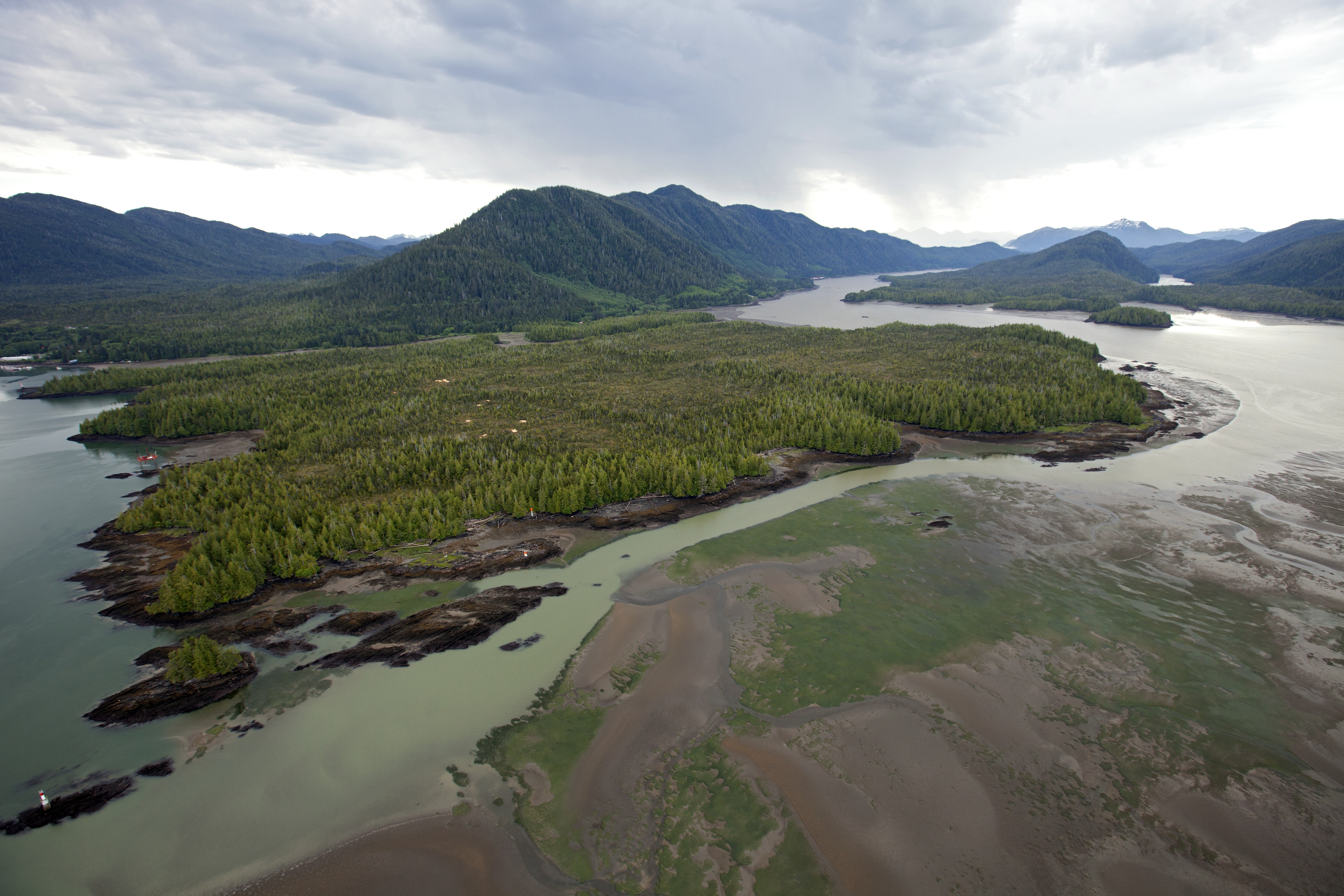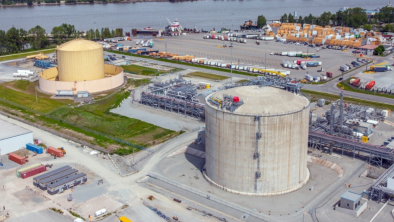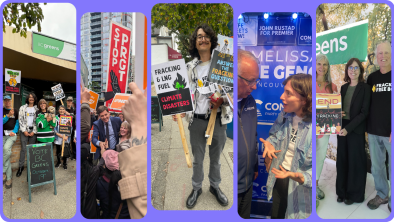Petronas cancels $11.4-billion LNG project near Prince Rupert
Tuesday, July 25, 2017
Vancouver Sun

Amid a global glut and depressed prices for natural gas, one of B.C.’s most promising LNG-export megaprojects has died.
Pacific NorthWest LNG, an $11.4-billion project once slated for construction on Lelu Island south of Prince Rupert, “will not proceed as previously planned”, Malaysian state-controlled oil and gas giant Petronas announced Tuesday morning.
Petronas said in a statement that the decision was made following a thorough review of the project as market conditions fluctuate.
“Today is a very difficult day for Pacific NorthWest LNG and Petronas,” said Pacific NorthWest LNG chairman Anuar Taib.
“We are disappointed that the extremely challenging environment brought about by the prolonged depressed prices and shifts in the energy industry have led us to this decision.”
Taib said the formation of a new B.C. NDP government — which previously opposed putting the plant on Lelu Island, located near important juvenile salmon-rearing habitat of significance to First Nations — wasn’t a factor in the decision.
He said Petronas looked forward to working with Premier John Horgan and would continue to look at other options to develop natural gas assets in Canada.
“We continue to believe that LNG can thrive in British Columbia with the right project at the right time,” Taib said.
Port Edward Mayor Dave MacDonald said Tuesday he was very disappointed about the announcement, but added his community, the closest to the project, would try to position itself for other smaller development projects.
“The decision was well beyond our control. Port Edward did everything we could,” said MacDonald, whose council had supported the project.
“You hear it’s ‘never going to happen, it’s never going to happen.’ But we tried to remain optimistic,” he said.
The community of 600, adjacent to the larger community of Prince Rupert, was in sight of Lelu Island, where the LNG terminal was slated to be built.
The community stood to gain from taxes, improved infrastructure, jobs and a major camp that would house thousands of workers.
James Tansey, associate professor with the Sauder School of Business at the University of B.C., said he’d seen indications lately that Petronas was on the fence regarding the investment.
“That’s a function, partly, of maybe underestimating the complexities of getting deals done in B.C., but also of longer-term low oil prices in Asia (where) the oil prices are tied to the gas prices,” he said.
Tansey said even for a big player like Petronas, current oil prices — consistently below US$50 per barrel — make such investments unattractive.
Still, Tansey said he was surprised by Petronas’ decision to pull out of the project completely, after it had already spent significantly on development and consultation for a site that provided the advantage of a shorter shipping route to Asian markets.
He said there didn’t seem to be a big downside to putting a halt on the project and watching where oil prices go.
Tansey said that six to eight months ago, consensus among those watching the industry was that little progress would be made before 2022, despite the previous government expecting revenues to start pouring in by 2018.
“I definitely think it’s going to be a long time before we see investment,” Tansey said.
“The fundamentals of natural gas, shale gas and LNG are still there, so at some point in the future it will make sense for someone big to invest in B.C. But at the current global prices, it’s not going to be immediate.”
Michelle Mungall, B.C.’s minister of energy, mines and petroleum resources, said she would immediately begin work with the LNG sector to ensure it that the new B.C. NDP government has plans to see other projects come to fruition.
“(Petronas) was very clear — this was a decision they are making because of the economic challenges in the global marketplace,” Mungall said.
“We respect the company’s decision and will now move on to support the prospects of British Columbia’s natural gas sector to create good-paying jobs right here in British Columbia.”
Pacific NorthWest LNG received federal approval last September and had been a leading LNG project proposal for several years.
The plant would have shipped 19 million tonnes of liquefied gas a year to markets in Asia, while pumping more than five million tonnes of carbon dioxide annually into the atmosphere.
The project’s approval represented part of a delicate balancing act by Prime Minister Justin Trudeau, who won the hearts and minds of young Canadians — especially in B.C. — with his promise to show greater respect for the environment than his predecessor, Stephen Harper.
But Trudeau also vowed to help Canada’s natural-resource industry create more middle-class jobs.
The former B.C. Liberal government, led by Christy Clark, had promoted LNG as an economic boon to the province, but it failed to materialize under her watch.
Other jurisdictions, including the U.S., jumped ahead of B.C. and then major energy companies dialed back spending when oil prices plummeted.
However, there are other LNG projects that continue to say they remain interested in B.C.
Among them are LNG Canada, Kitimat LNG and Woodfibre LNG.
The B.C. LNG Alliance, made up of companies with proposed projects in the province, issued a statement Tuesday noting that projects must be globally cost-competitive to move forward.
In the statement, Gillian Robinson, a spokeswoman for the advocacy group, said the alliance’s focus in the coming months is to work with the new B.C. government and federal government to ensure B.C. sees the benefits of an LNG export sector.
“We have a window of opportunity to develop B.C.’s LNG industry, but the next several years will be critical. We risk losing thousands of jobs and billions of dollars in benefits if B.C. does not have diversified access to markets,” said Robinson.
The president of the Independent Contractors and Businesses Association called Petronas’ decision “a tough blow” for B.C.’s construction industry.
“We are deeply disappointed that PNW will not go forward, as it means thousands of construction jobs will not materialize,” Chris Gardner said in a statement.
Gardner said the project would have created 4,500 construction jobs, 330 long-term operations positions and up to $1.3 billion annually in government revenue.
The B.C. Liberals said in a statement that Petronas’ decision was a result of the NDP’s “Closed for business agenda.”
The Liberals said that while Petronas said it had made the decision based on market conditions, John Horgan campaigned vigorously against the project.
“This attitude, as well as additional costs the NDP plan to impose on job creators with measures such as a higher, non-revenue neutral carbon tax, send a clear signal that under the NDP, British Columbia is not a friendly market to invest in,” the Liberals said.
Horgan has long expressed support for LNG development but has said he opposed Pacific NorthWest LNG because of the terminal’s proposed location on Lelu Island, which posed a threat to salmon populations.
Lake Babine Nation chief Wilf Adam said the LNG project’s cancellation leaves a bitter taste.
He said if the project had been planned for somewhere other than Lelu Island, there would have been more support and it may have proceeded successfully.
Lake Babine Nation, like other First Nations, was concerned about the effect the project would have on juvenile salmon habitat in the Skeena estuary, but would have benefited to the tune of $100 million over 25 years under signed government and company agreements.
Andrew Weaver, leader of the B.C. Green party — which struck a deal with the B.C. NDP to form a minority government — slammed the Liberals for their failure to deliver on LNG, which was a focus of the party’s 2013 election campaign.
“Rather than doing the hard work required to strengthen and secure the economic opportunities already available in other sectors, the B.C. Liberals recklessly went all in on a single industry,” he said. “They let opportunities for innovation and economic development in clean technology, the resource sector, and other major B.C. industries fall by the wayside.”
The environmental group Wilderness Committee called the cancellation of the project a “massive win” for communities on the Skeena River and the global climate.
“We’re absolutely thrilled that the Malaysian backers of this liquefied natural gas terminal have backed down from their reckless plan to jeopardize B.C.’s second largest salmon run and blow our provincial climate targets,” said Peter McCartney, climate campaigner for the Wilderness Committee.
With files from Gordon Hoekstra
The evaporation of an LNG project: A chronology of Pacific NorthWest LNG:
CANADIAN PRESS — Here is a look at how the Pacific NorthWest LNG project evolved over the last several years before the announcement of its demise Tuesday:
Feb. 19, 2013: Pacific NorthWest LNG submits its project description to the Canadian Environmental Assessment Agency.
April 29, 2013: Japan Petroleum Exploration Co. Ltd. buys a 10 per cent stake in Pacific NorthWest LNG and agrees to buy 10 per cent of the liquefied natural gas produced over at least 20 years, becoming the first secure buyer.
Dec. 16, 2013: The National Energy Board grants Pacific NorthWest LNG a licence to export up to 22.2 million tonnes of LNG annually for 25 years. It had applied in July for a licence to export up to 19.68 million tonnes, beginning in 2019.
Feb. 28, 2014: Pacific NorthWest LNG submits its environmental impact statement to the Canadian Environmental Assessment Agency.
March 26, 2014: The federal government approves Pacific NorthWest LNG’s export licence.
June 11, 2015: In what it calls its final investment decision, Pacific NorthWest LNG announces it will proceed with the project as long as it satisfies two conditions: approval of a project development agreement by the B.C. legislature and clearing the federal environmental assessment review process.
July 21, 2015: The B.C. government passes legislation to ratify a project development agreement with Pacific NorthWest LNG.
March 21, 2016: The federal government grants the Canadian Environmental Assessment Agency more time to review the project.
Sept, 27, 2016: The federal government approves the project with 190 conditions, including for the first time a maximum cap on greenhouse gas emissions.
Oct. 27, 2016: Two First Nations and an environmental group file separate applications for judicial review in Federal Court to quash approval of the project. A fourth challenge is launched in January 2017.
July 25, 2017: Pacific NorthWest LNG says it will not proceed with the project, citing poor market conditions including a prolonged period of low LNG prices.
Read the original article here
Photo by Brian Huntington


